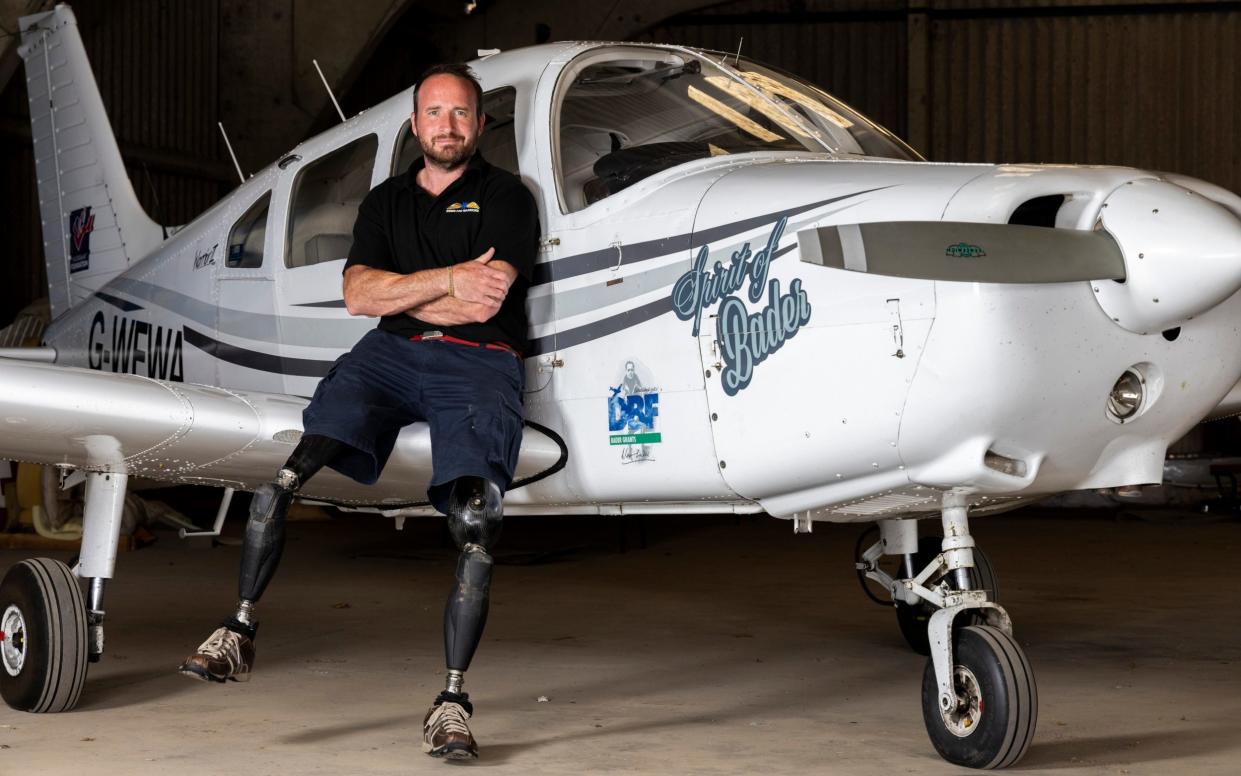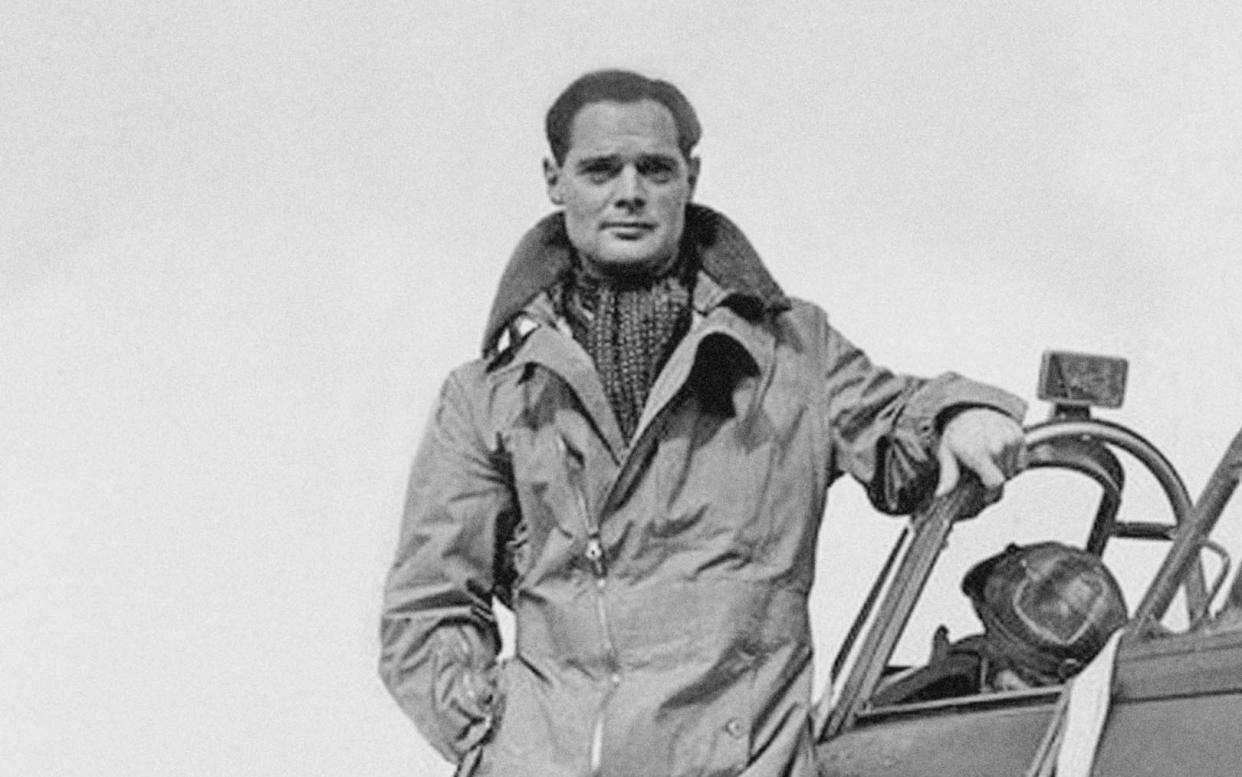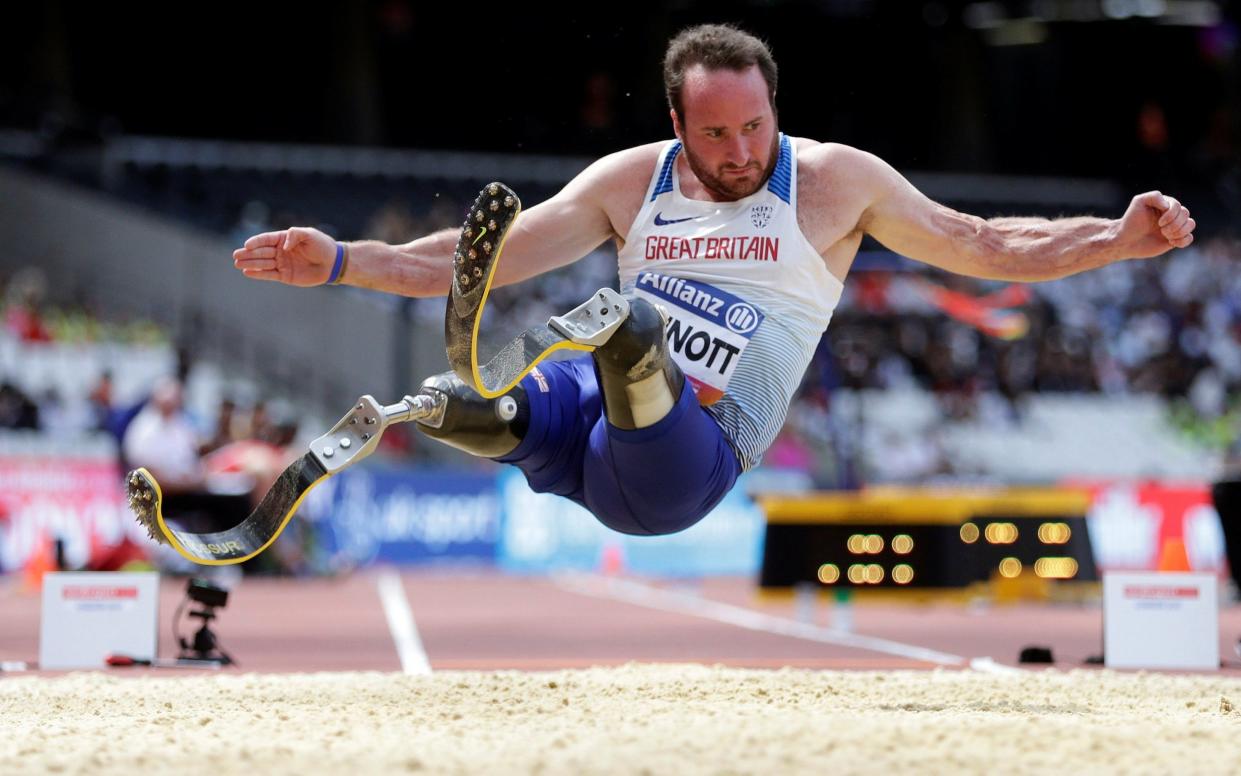Afghan veteran set to be first double leg amputee pilot since Douglas Bader

An Afghanistan veteran is on course to become the first pilot without legs since Sir Douglas Bader.
Learning how to fly became a hobby for Luke Sinnott after he lost his legs above the knee in an explosion in Afghanistan in 2010.
But the British para-athlete has since obtained his private pilot’s licence and is now training for a commercial certificate, which would allow him to fly passenger jets.
He would become the first commercial pilot without legs since Bader, who became a double amputee when he crashed his plane just 18 months after being commissioned as an officer in the Royal Air Force (RAF).
Bader earned legendary status by leading the RAF’s 242 squadron in the Second World War and plotting to escape as a prisoner of war, leading to his famous maxim: “A disabled person who fights back is not disabled … but inspired.”
He overcame predictions from doctors that he would never walk again by walking on metal alloy prosthetic legs within six months of the crash, and now Mr Sinnott is benefiting from far more advanced technology.

Mr Sinnott, 43, has revolutionary prosthetic knee sockets that allow him to control the foot pedals for the rudder and brakes of a 100-tonne jet aircraft while handling the steering column.
The legs also have small-sized feet to give him more room on the pedals and allow for more range of movement.
Just like Bader, the father of three has had to prove to the Civil Aviation Authority (CAA) that having no legs is not a hindrance to him in the cockpit.
He has been put through a series of tough tests in flight simulators for British Airways and TUI, the holiday package flight operator.
Having passed his class 1 medical with the CAA, he is now starting 12 months of training to fly commercially, as well as also training for the Paralympics in Paris where he hopes to represent Britain in the long jump.
“After I joined the Army I wanted to fly Apache helicopters. I was due to start training up after the tour where I got injured,” Mr Sinnott, who lives in the New Forest, Hants, said.
“I thought that avenue was closed off to me and I never imagined I would fly again.”
After recovering from his injuries he was given a taste of flying through the charity Aerobility, which offers disabled veterans experiences in light-aircrafts that are adapted for them.
Mr Sinnott said: “I started doing more flying and realised maybe there was a way that I could adapt to the aircraft with my legs rather than the other way around because it is really hard to fly an aircraft normally without legs.”
He then started working with another flying charity, Wings For Warriors, which trains wounded servicemen as professional pilots to give them a future career after the military.

A private prosthetic company named Dorset Orthopaedics initially helped him with his running blades, before Steve Cox, a prosthetist there, began studying him in a flight simulator to understand how he could fly again.
He trialled hi-tech Ottobock Genium X3 microprocessor knees which have been programmed and set up to help him fly a plane.
“Luke had some very uncomfortable fixed legs but we thought there could be some improvements to the whole set up to help his ability to control an aircraft safely and effectively,” Mr Cox said.
He added: “The microprocessor knees have some movement and can bend and set the angles and help Luke press pedals evenly.”
The feat closely echoes that of Bader who is still hailed as one of Britain’s best aviators after he shot down 23 enemy aircraft as a fighter ace in the Battle of Britain.
After the war he became a commercial pilot for the oil company Shell. Bade died aged 72 in 1982.
Paul Brickhill, who authored the flying ace’s biography, wrote in 2018 that he “was the living embodiment of the RAF motto, ‘Per ardua ad astra’ (‘Through adversity to the stars’)”.


